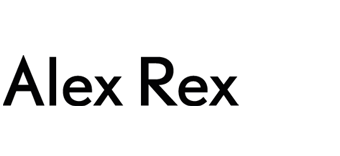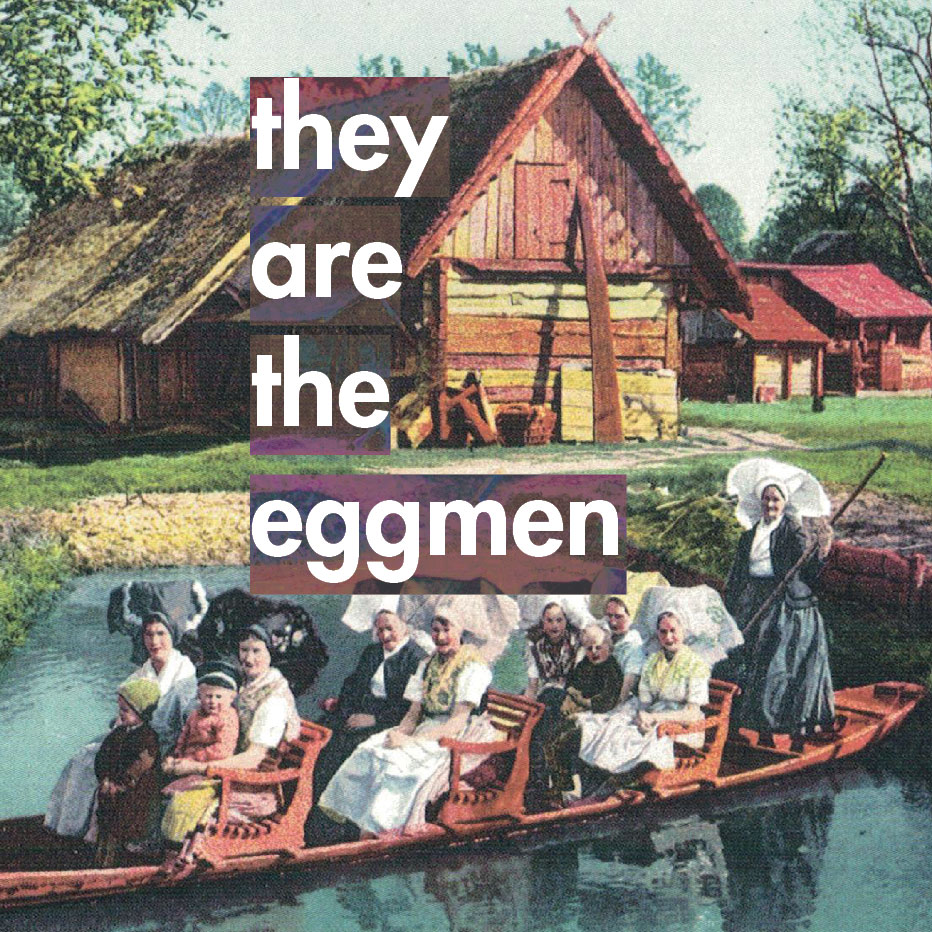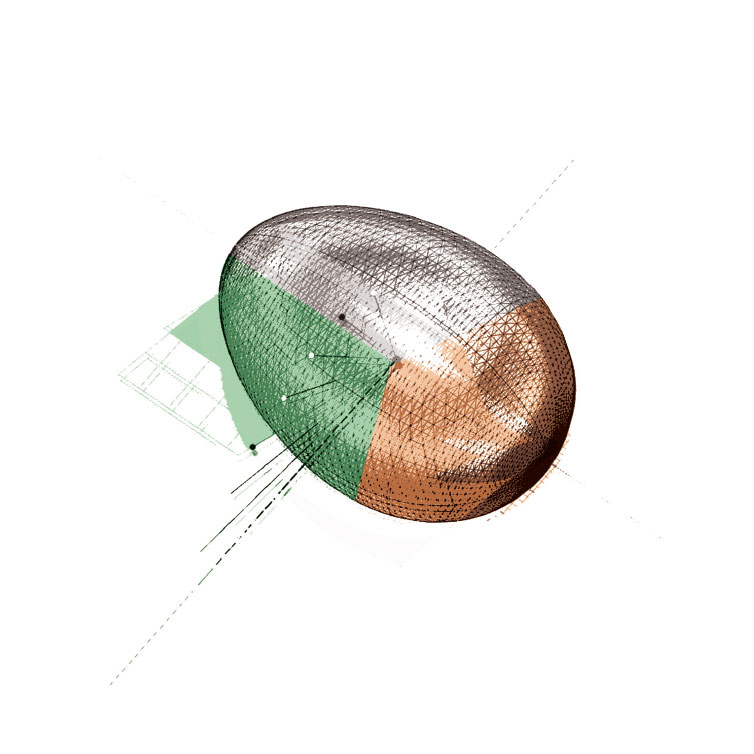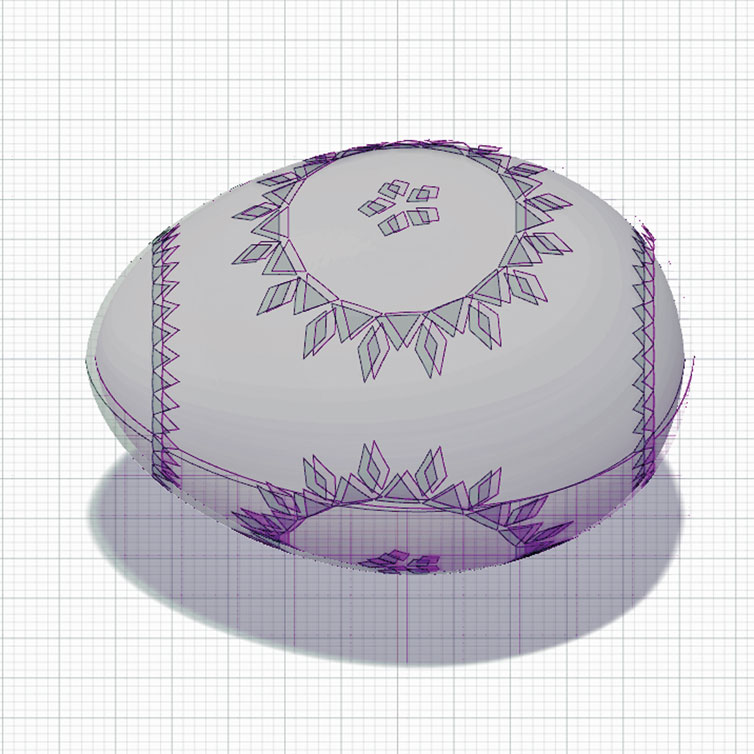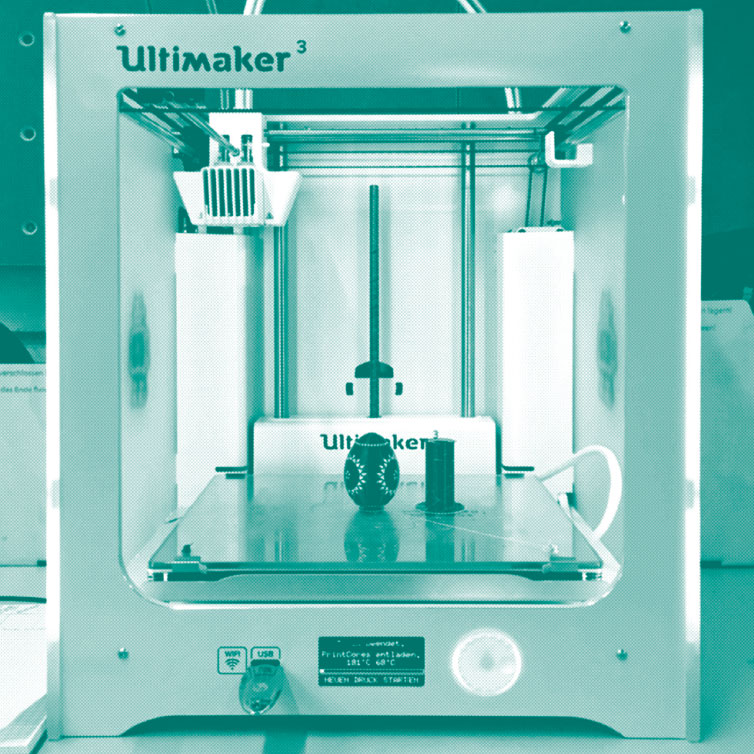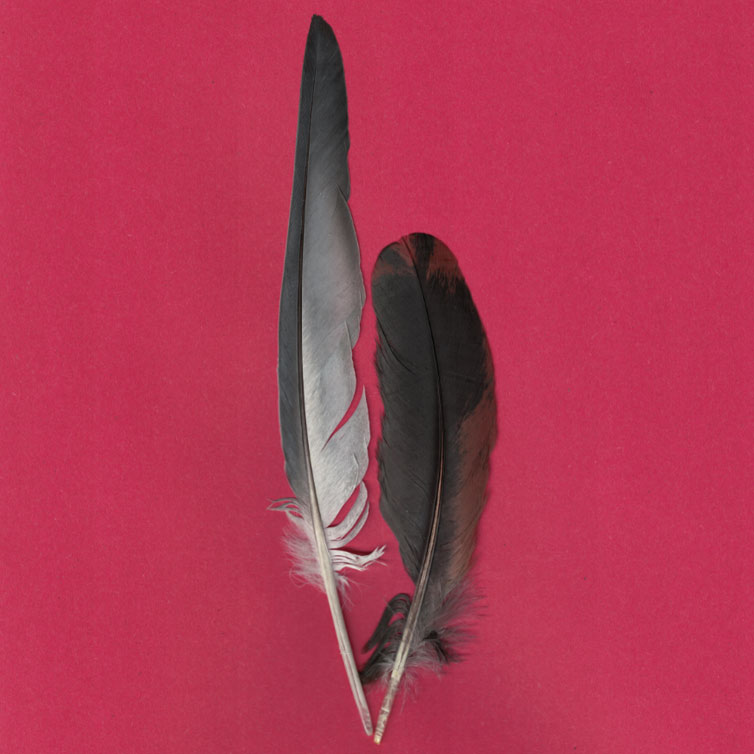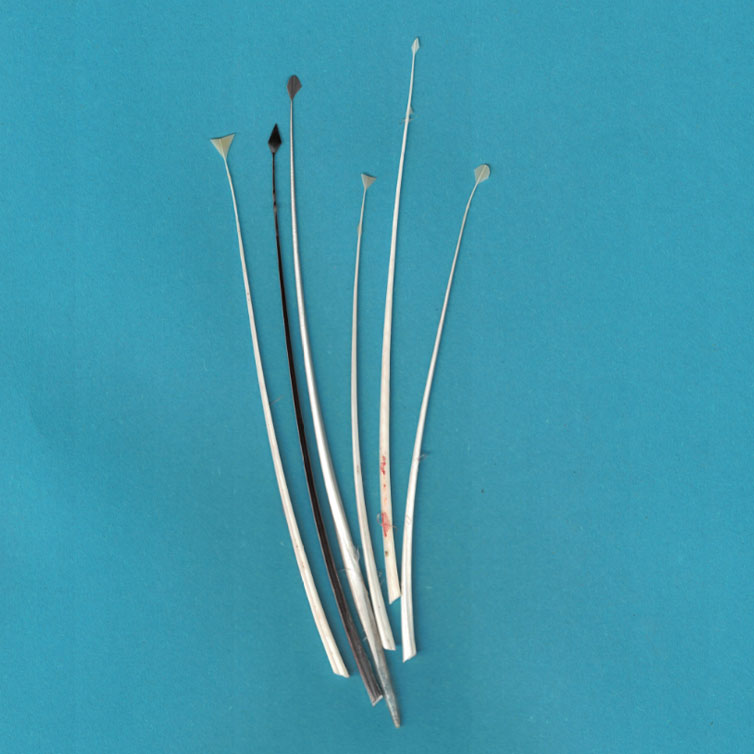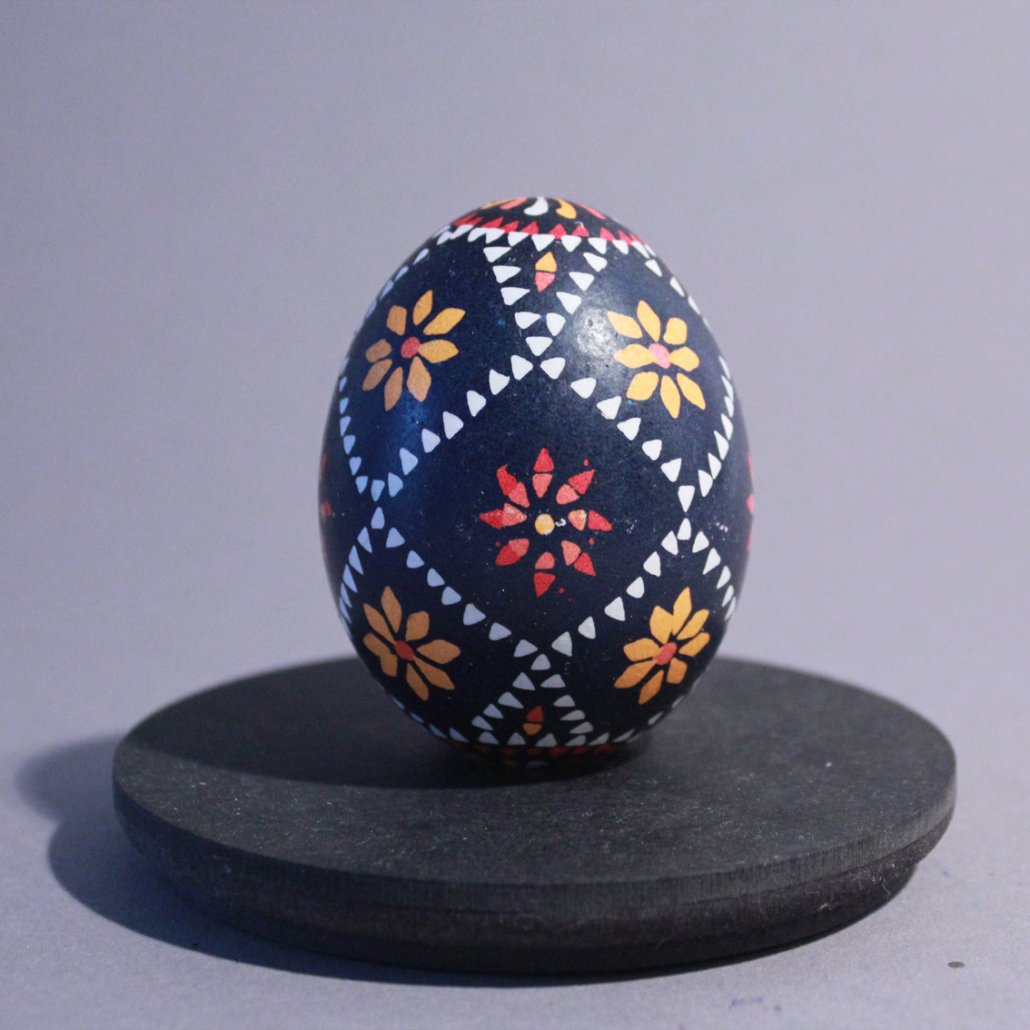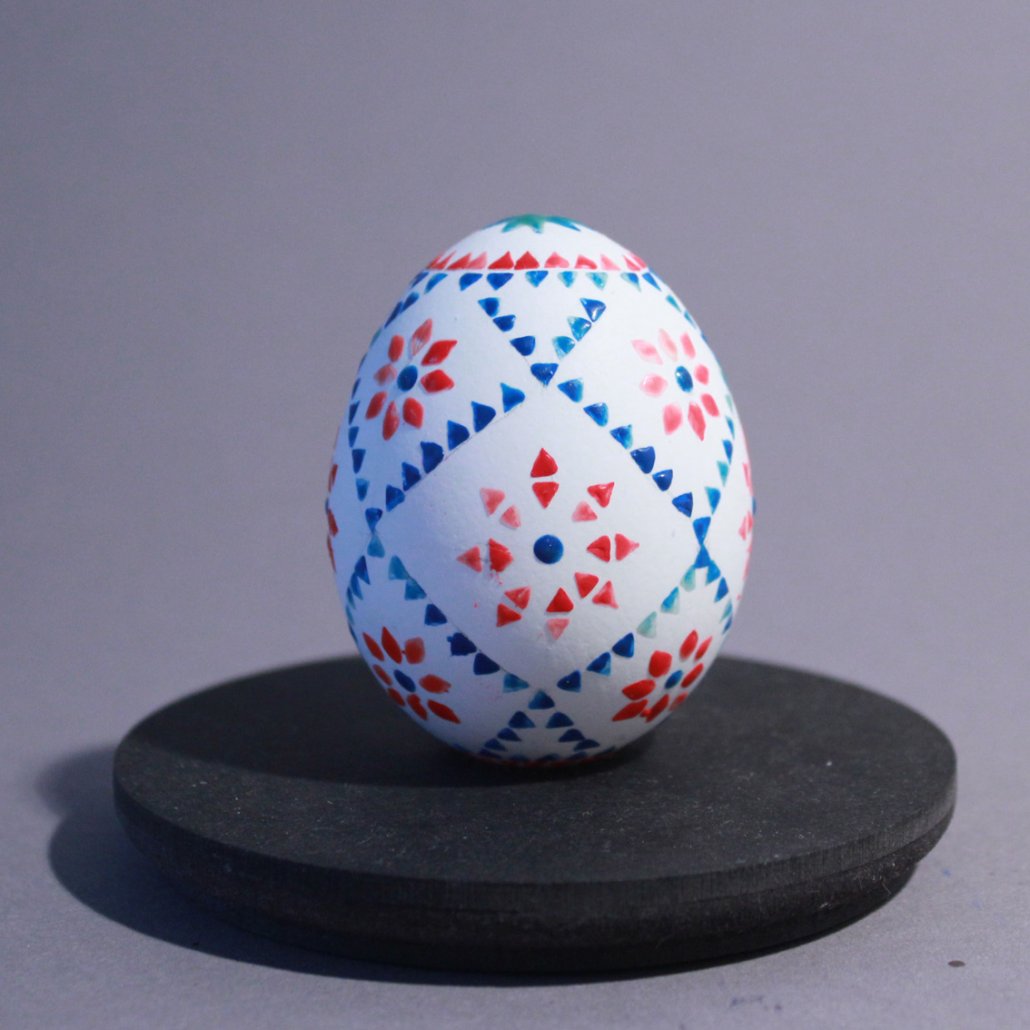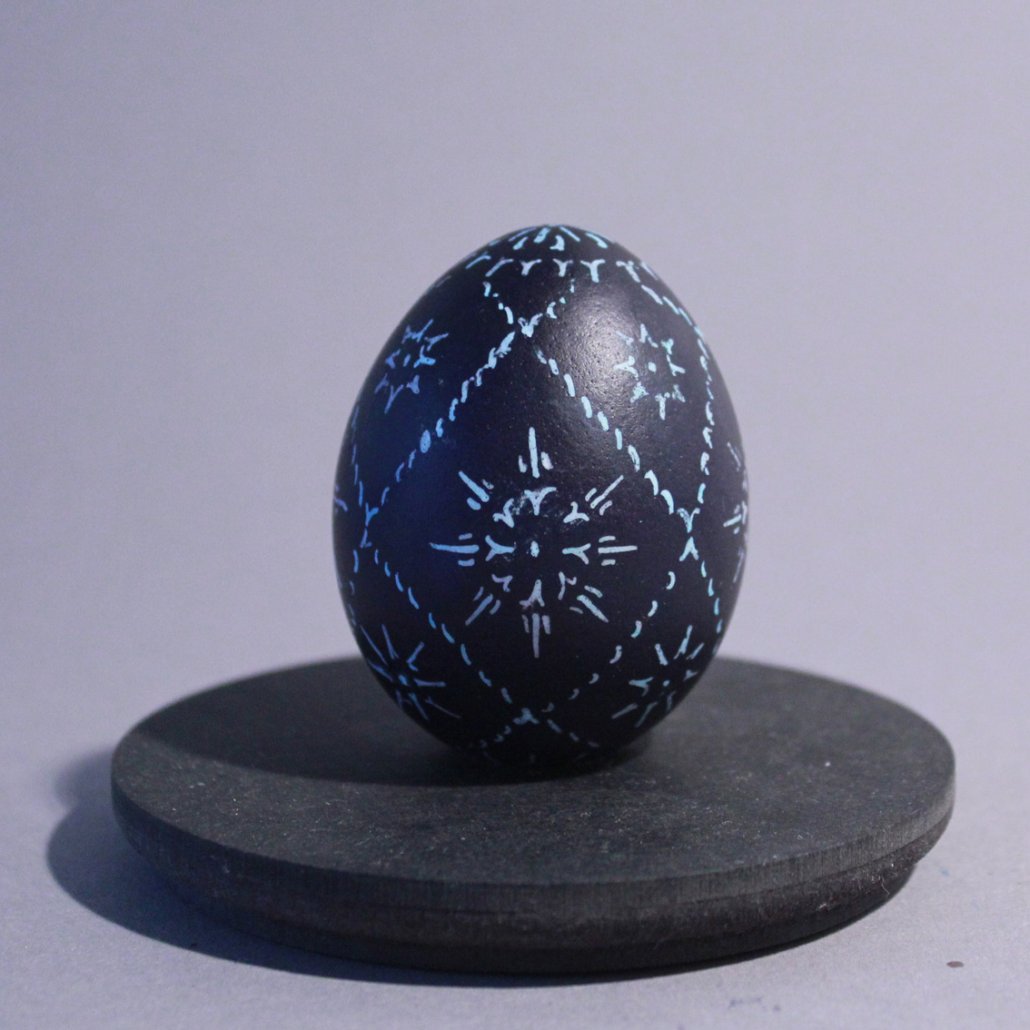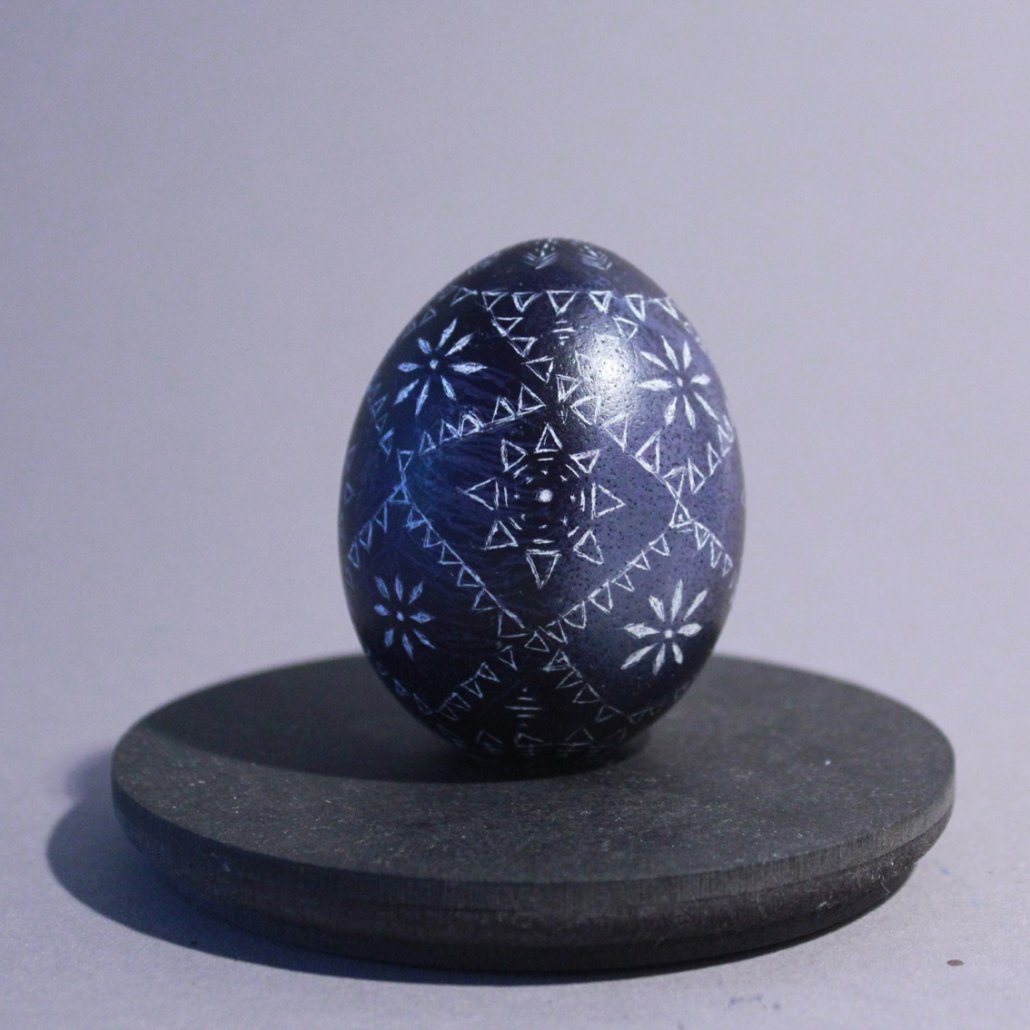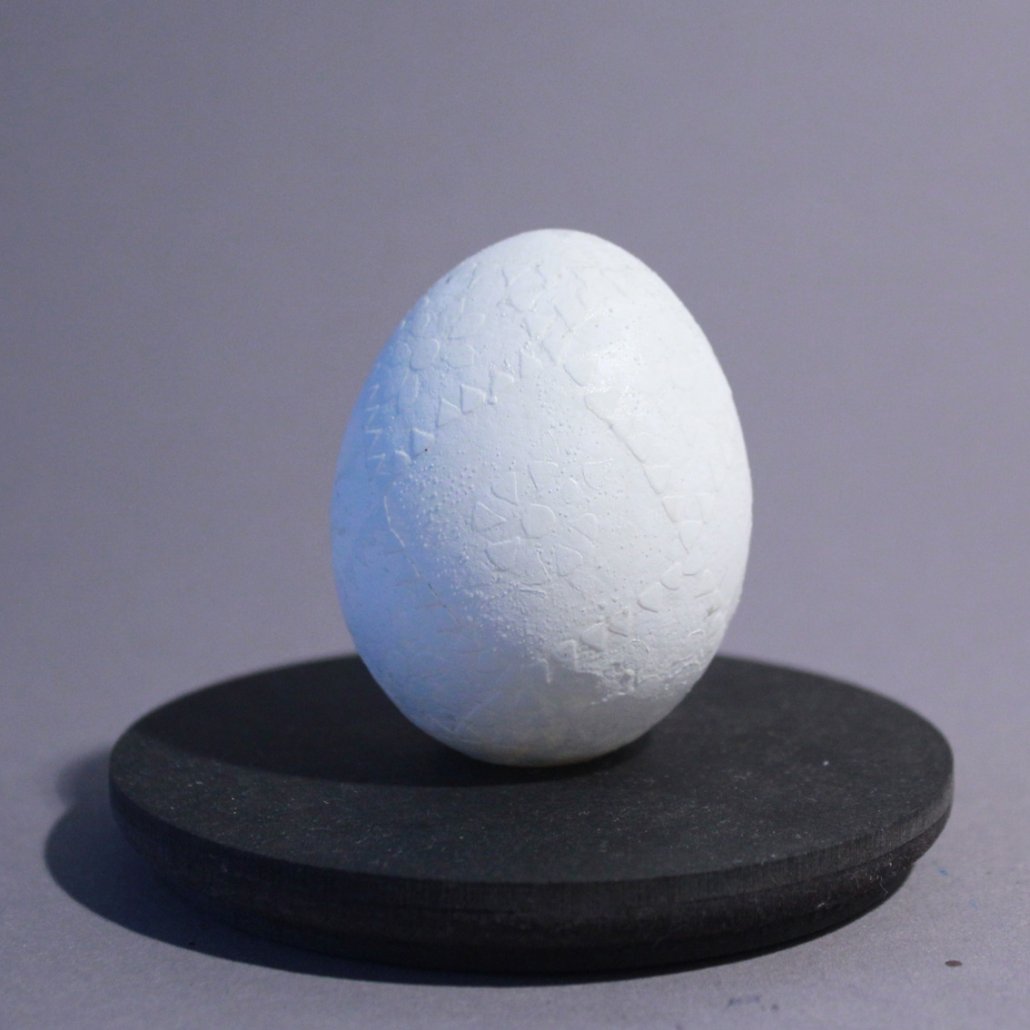They are the Eggmen
The folk art of Easter egg painting dates back to the 18th century and is increasingly found in Eastern Europe. In Lusatia, the Sorbs developed their own four techniques to decorate eggs in a particularly artistic way. During my childhood in Lower Lusatia I was familiar with the sorbian technique of egg painting. In 2009 my aunt turned her talent into a profession and opened a shop where she paints and sells eggs and gives courses in sorbian technique.
The patterns on a sorbian egg are to be applied symmetrically and closed all around. The egg has an equator and two poles. Typical patterns such as honeycombs, wolf teeth, sunrays and bundles of flowers are depicted as ornaments, in geometric, stylised or naturalistic form, depending on the technique used. The eggs can be monochrome or multicoloured. Depending on the region, the colours can convey different traditional meanings.
With the project „They are the Eggmen“ I compare computer-assisted techniques with traditional handicraft techniques. I question when and to what extent design must always be progressive. Is it even possible to design tradition progressively? Tradition is rather the opposite of progressivity, it is conservative. When is progressivity necessary in design and when is it not necessary?
After some experiments with computer-aided techniques I came to the conclusion that most modern techniques ignored the important aspect of the egg painting process. The essence of egg painting is that man remains part of the process. For me, the meditative, focused and manual exercise is the essence of egg painting.

So entschied ich mich, von den zeitgenössischen Techniken Abstand zu nehmen.
Mein Fokus lag darauf, das alte Handwerk zu entschlüsseln, um darauf aufbauend eine eigene Technik zu entwickeln. Diese gliedert sich unauffällig in die vier Traditionellen ein. Aufbauend auf der Logik der alten vier Techniken, habe ich eine fünfte Technik in gleicher Logik entworfen. Dazu verwendete ich alte Werkzeuge und Materialien. Das Ei wird mit Wachs in einem Muster bedeckt und dann in Haushaltsessig (25%) getaucht. Die Säure löst die Kalziumschale auf, während der mit Wachs bedeckte Bereich nicht angegriffen wird. Durch Spülen, Trocknen und erneutes Auftragen von Wachs können mehrere Plateaustufen geätzt werden. Sorbische Muster bilden hierbei die Vorlage für die Ornamente. Bei dieser Technik wird die Erscheinung auf die Färbung der natürlichen Eierschale reduziert. Das Ergebnis ist eine dreidimensionale Ausarbeitung des sorbischen Musters.
Diese fünfte Technik nenne ich „Plateautechnik“.
2019
So I decided to distance myself from contemporary techniques.
My focus was on deciphering the old craft in order to develop my own technique based on it. This is inconspicuously integrated into the four traditional ones. Based on the logic of the old four techniques, I designed a fifth technique in the same logic. I used old tools and materials. The egg is covered with wax in a pattern and then dipped in household vinegar (25%). The acid dissolves the calcium shell, while the wax-covered area is not attacked. Several plateaus can be etched by rinsing, drying and re-applying wax. Sorbian patterns form the pattern for the ornaments. With this technique the appearance is reduced to the colouring of the natural egg shell. The result is a three-dimensional elaboration of the sorbian pattern.
I call this fifth technique „plateau technique“.
2019
